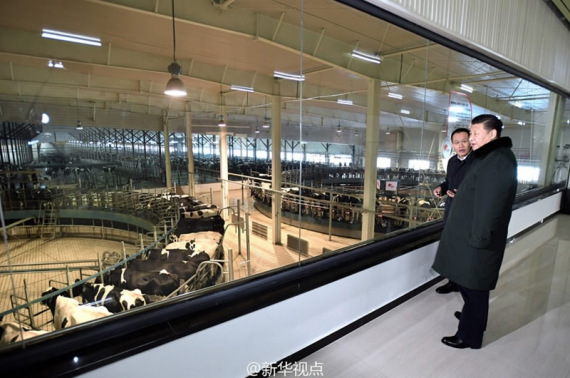
Chinese President Xi Jinping (R) inspects a dairy products manufacturer in Zhangjiakou, Hebei Province in north China on January 24, 2017. (Xinhua Photo)
Although industrialization advanced by leaps and bounds in China in recent decades, the agricultural sector still plays a significant role in the world's most populous country, where about 600 million people -- nearly twice the population of the United States -- live in rural areas.
In 2016, rural residents in China witnessed promising improvements in their businesses and livelihood, owing to the country's supply-side structural reform in agriculture and its ambitious urbanization program.
Increase in farmers' income
China's rural per capita disposable income reached 12,363 yuan (about 1,800 US dollars) in 2016, up 6.2 percent in real terms – higher than the 5.6 percent growth rate of urban per capita disposable income that year, according to the National Bureau of Statistics (NBS).
The per capita income of urban households was 2.72 times that of rural households, down from 2.73 times in 2015, NBS data shows.
With the narrowing gap between urban-rural incomes, Chinese farmers saw another bumper harvest last year.
Although China's grain output dropped 0.8 percent year on year to about 616 million tons in 2016, ending a 12-year rising streak, it was still the second highest year on record.


















































